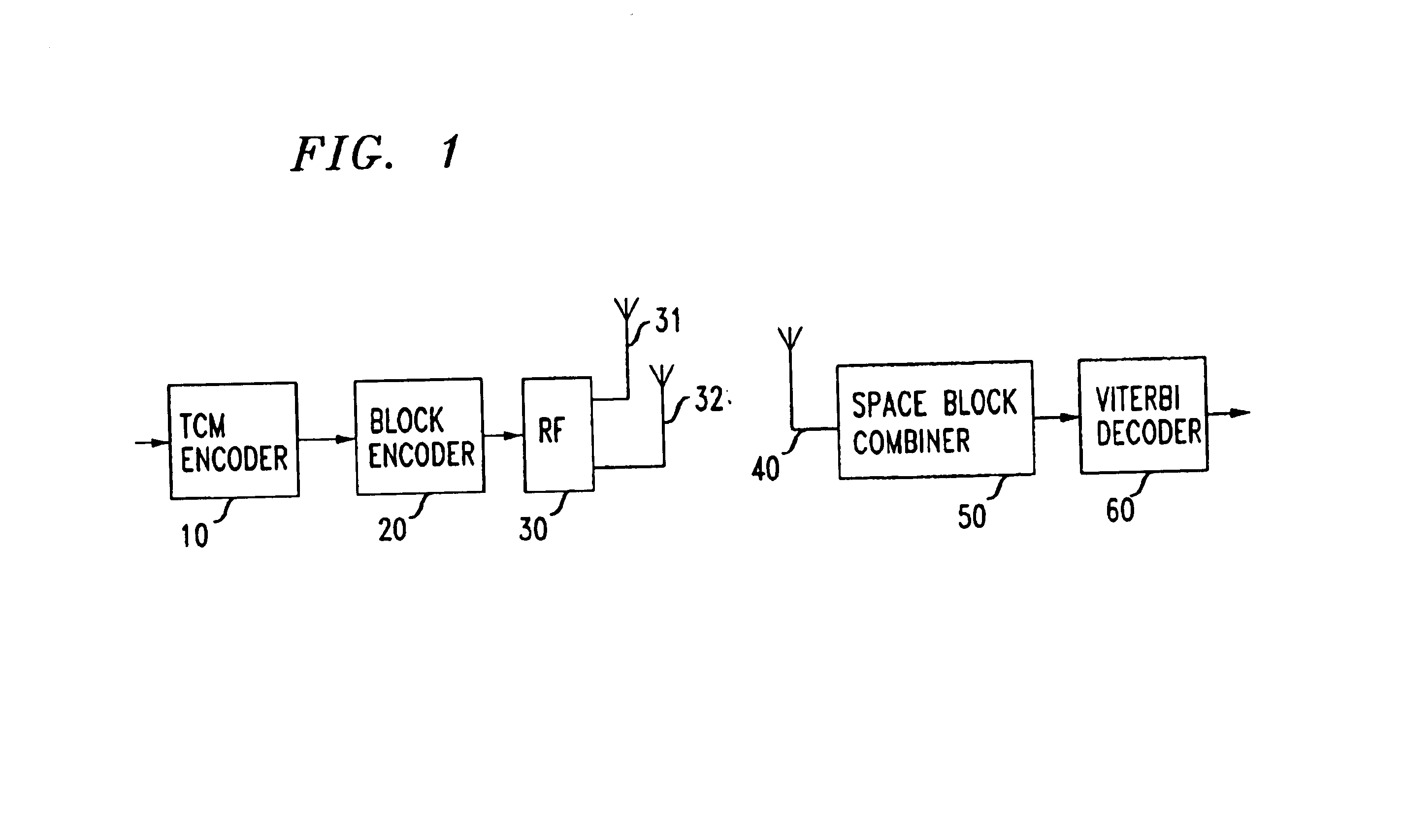Low complexity maximum likelihood detection of concatenated space codes for wireless applications
a wireless application and high-complexity technology, applied in the field of wireless communication, can solve the problems of transmitters without any knowledge of channels, power by db, and transmitters without any knowledge of the channel,
- Summary
- Abstract
- Description
- Claims
- Application Information
AI Technical Summary
Problems solved by technology
Method used
Image
Examples
Embodiment Construction
FIG. 1 presents a block diagram of an arrangement comporting with the principles of this invention. It comprises a trellis code modulation (TCM) encoder 10 followed by a two-branch space block encoder 20. The output is applied to antenna circuitry 30. which feeds antenna 31, and antenna 32. FIG. 1 shows only two antennas, but this is merely illustrative. Arrangements can be had with a larger number of antennas, and it should be understood that the principles disclosed herein apply with equal advantage to such arrangements.
TCM encoder 10 generates complex numbers that represent constellation symbols, and block encoder 20 encodes (adjacent) pairs of symbols in the manner described in the aforementioned Ser. No. 09 / 074,224 application. That is, symbols s0 and s1, forming a pair, are sent to antenna 31 and antenna 32, respectively, and in the following time period symbols −s1* and s0* are sent to antennas 31 and 32, respectively. Thereafter, symbols s2 and s3 are sent to antenna 31 and ...
PUM
 Login to View More
Login to View More Abstract
Description
Claims
Application Information
 Login to View More
Login to View More - R&D
- Intellectual Property
- Life Sciences
- Materials
- Tech Scout
- Unparalleled Data Quality
- Higher Quality Content
- 60% Fewer Hallucinations
Browse by: Latest US Patents, China's latest patents, Technical Efficacy Thesaurus, Application Domain, Technology Topic, Popular Technical Reports.
© 2025 PatSnap. All rights reserved.Legal|Privacy policy|Modern Slavery Act Transparency Statement|Sitemap|About US| Contact US: help@patsnap.com


